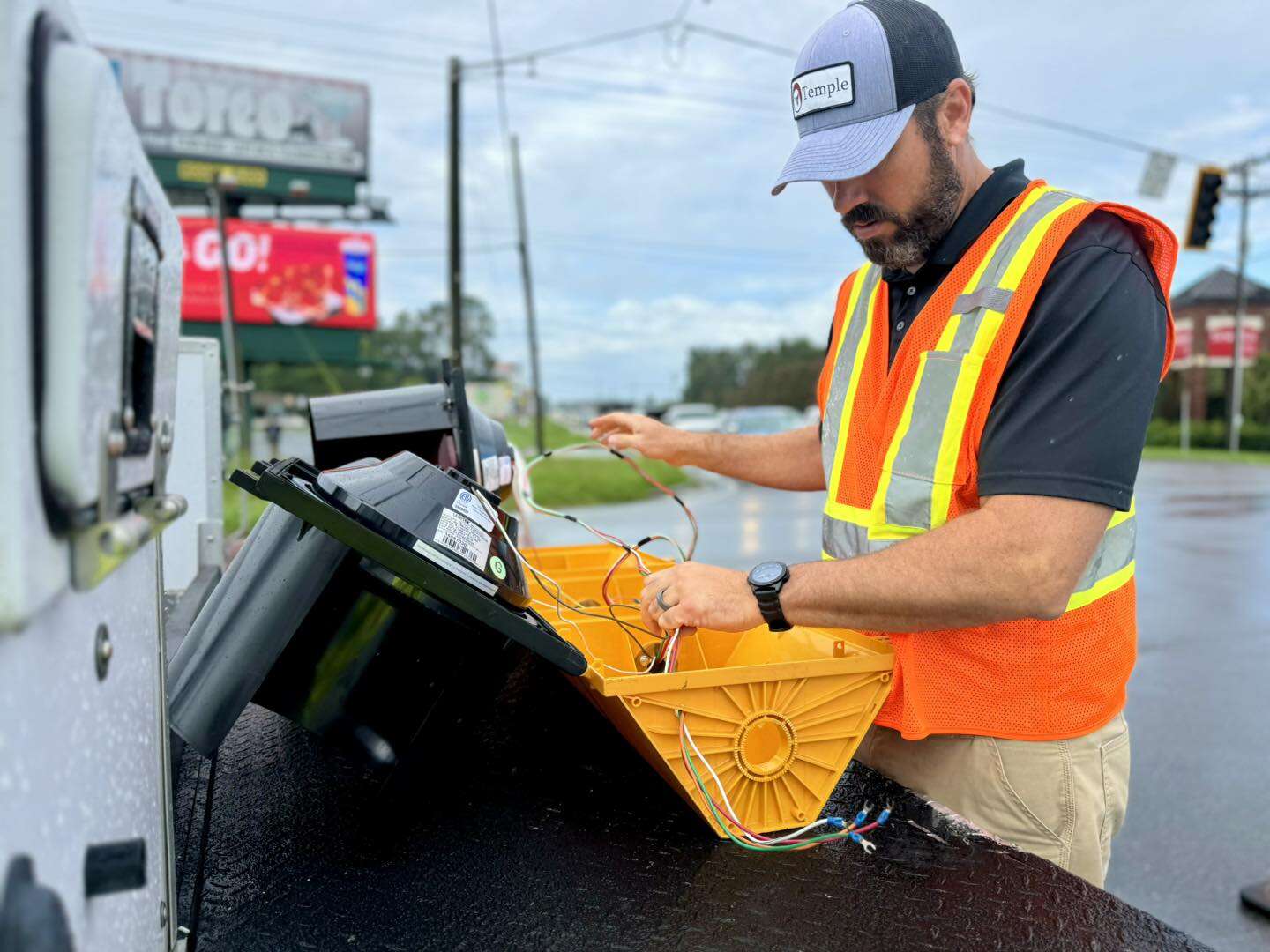Online report: Valdosta ‘3rd poorest city in U.S.’
Published 8:00 am Friday, October 19, 2012

- Delaware investment analysis publication 24/7 Wall St. posted an article titled “America’s Poorest Cities” on the Web Oct. 4 making the claim that the Valdosta Metropolitan Service Area is the third poorest MSA in the United States, after the McAllen-Edinburg-Mission, Tex. MSA, ranked lowest, and the Brownsville-Harlingen, Tex. MSA, ranked second lowest.
Delaware investment analysis publication 24/7 Wall St. posted an article titled “America’s Poorest Cities” on the Web Oct. 4 making the claim that the Valdosta Metropolitan Service Area is the third poorest MSA in the United States, after the McAllen-Edinburg-Mission, Tex. MSA, ranked lowest, and the Brownsville-Harlingen, Tex. MSA, ranked second lowest.
These numbers are based on the U.S. Census Bureau’s 2011 American Community Survey, published Sept. 20. The survey reports data collected from Jan. 1 to Dec. 31, 2011, and is available for geographic areas with populations of 65,000 or more, according to the Bureau’s Web site.
The publication also used data from the Bureau of Labor Statistics.
As an online source for money market analysis and commentary, 24/7 Wall St. reaches investors across North America, Asia, the Middle East and Africa, according to profile information on its Web site.
Its articles are often republished by many large news sites and portals, including Aol’s Daily Finance, MarketWatch, MSNBC, MSN Money, Yahoo! Finance, Comcast and The Huffington Post, the Web site states.
Such is the case with the article that punishes the Valdosta MSA for allegedly low numbers; “America’s Poorest Cities” appears on most of these Web sites.
However, the ranking system is far from official. According to the 24/7 Wall St. itself, all articles printed are matters of opinion.
“24/7 Wall St. is not an investment adviser, and the content of the site is not an endorsement to buy or sell any securities,” the Web site’s “About” section states. “Articles are simply the opinions of the writers.”
Further, according to Co-Founder and Editor Douglas McIntyre, the writers of the article—Michael B. Sauter, Alexander E.M. Hess and Sam Weigley—used only a single facet of the data to form their ranking: median household income.
“We’re not trying to give the reader 800 words on each city,” McIntyre said.
Indeed, the article only prints a short summary paragraph on each city that appears in the ranking. When the information is compared to the Census Bureau data, the article appears to lack specificity.
For example, the article does not print that the Valdosta MSA includes not only Lowndes County, but also Echols, Lanier, and Brooks counties.
“This is not a Valdosta study,” Valdosta City
Manager Larry Hanson said.
“It is a four-county metro analysis of the economy.”
The fact that the ranking was based on median household income alone also poses some problems with the accuracy of such a statement, making the study “overly simplistic,” Hanson said.
In the Census Bureau’s Selected Economic Characteristics report for the Valdosta MSA, the same numbers used by 24/7 Wall Street for their article, the Valdosta MSA shows that 16.9 percent of jobs are held by the retail industry and 23.7 percent by educational service, health care and social assistance.
Jobs in these industries are usually held by college students, and are usually low-paying jobs. This fact can bring down the numbers for median household income, especially in the case of communities flooded with young people like Valdosta, lending a poor assessment of the economy as a whole.
“It kind of skews the numbers,” Hanson said. “You can’t examine one economic indicator in an economy and draw conclusions from it.”
The Lowndes County Board of Commissioners agrees with Hanson.
“Lowndes County is most concerned with local indicators and data that is collected as a result of local service delivery,” County Manager Joe Pritchard stated. “Outside studies performed by others that have not contacted our community directly can only make assumptions based on data gathered by third parties.”
Pritchard added that Census data does measure certain aspects of the community, the data itself does not provide all the indicators required to measure the health of the local economy.
Further, some of the numbers printed in the article do not match data printed in the Census Bureau’s SEC. 24/7 Wall St. printed that the population of the Valdosta MSA is about 140,600, while the Bureau measures 2011 population of citizens “16 and over,” namely, eligible to work, at around 109,300.
When asked whether that larger number included children younger than 16 years and ineligible for work, McIntyre said, “I don’t know why we wouldn’t include everybody. They do live below the poverty line.”
The article states that 27.6 percent of households live below the poverty line, but the Census Bureau states that the correct wording should read percent of “persons below the poverty line,” and that more accurate numbers would read 25.4 percent plus or minus 2.9 percent, though the two numbers are essentially the same.
However, the Census Bureau also states that a more accurate analysis of poverty in any area would use the poverty rates, not median household income.
The Bureau added that Valdosta might have the highest poverty rate (or lowest median income) but would also be “statistically tied” with many other places for that distinction.
The Valdosta MSA’s median household income was $32,446, but that number, an estimation (as are all numbers in such Census Bureau studies), is not statistically different than the estimates for many other areas with similar populations.
The issue is the same involving poverty rates, the Bureau stated. The poverty rate of 27.6 percent is not statistically different than the poverty rates for many different metro areas.
The numbers presented by 24/7 Wall St. are based on 2011 estimates, and the U.S. Department of Labor Statistics releases new numbers on a monthly basis.
According to the Georgia Department of Labor, Valdosta’s unemployment rate for August 2012 falls much lower than some other Georgia cities.
Dalton, Ga. has the highest unemployment rate in the state at 11.6 percent, while Valdosta rates fifth lowest in the state at 8.7, beating out Rome, Brunswick, Albany, Macon, Columbus, Augusta, Hinesville and Atlanta.
In spite of the article that 24/7 Wall St. released, Valdosta will likely not be marred by the negative press, according to Hanson. Within the industrial community, there has been little conversation about the article, he said.
“The developers we deal with every day do a more in-depth analysis,” Hanson said. “They’re going to draw their own conclusions and do their own analysis. One party can see that unemployment is high and believe that it’s a negative, while others can say it’s good that it’s high because there are people to employ.”
Still, Hanson believes Valdosta and surrounding counties should continue to work together as a metropolitan area to improve per capita and median household income.
“It is important to families and the future growth of the area,” Hanson said. “It takes all parties working together to improve this statistic.”
August 2012 jobless rates among Georgia cities:
Dalton-11.6 percent
Rome-10.3 percent
Brunswick-10.1 percent
Albany-9.9 percent
Macon-9.7 percent
Columbus-9.3 percent
Augusta-9.4
Hinesville-9.1 percent
Atlanta-8.9 percent
Valdosta-8.7 percent
Savannah-8.6 percent
Warner Robins-7.6
Gainesville-7.2
Athens-6.7





